Kingdom of Torgu
Kingdom of Torgu Torgu Kuningriikl | |
|---|---|
| Anthem: O, Sörvemaa | |
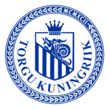 State Seal | |
 | |
| Capital | Iide |
| Other languages | Estonian |
| Government | Democratic monarchy |
• King | Kristian I |
| Establishment | 18 August 1992 |
| Area | |
• Total | 139.5 km2 (53.9 sq mi) |
| Population | |
• 2022 census | 342 |
| Currency | Torgu taaler (½L) (TRT) |
| Time zone | UTC+2/+3 |
The Kingdom of Torgu (Estonian: Torgu Kuningriik) is a micronation, located in the Republic of Estonia, on the southwestern part of the island Saaremaa (Ösel), on the Sõrve peninsula (Sõrvemaa).
The Kingdom was proclaimed in 18 August 1992. The coronation of King Kirill I took place on the 28th of November of the same year. It is the oldest micronation of Estonian sector.
Etymology
Torgu Parish was a rural municipality at the tip of the Sõrve Peninsula on the island of Saaremaa in western Estonia. It is a part of Saare County.
This parish consisted of 22 villages. The municipality had a population of 342 (as of 2022 year) and covered an area of 126.44 km².
History
The reason for the establishment of the Kingdom was the failed administrative reform on 30 July 1992, managed by the Presidium of the Supreme Council of the Republic of Estonia. As a result, this part of Estonia (former Jämaja Parish and Torgu municipality) was de jure excluded from the administrative territory of the Republic of Estonia.
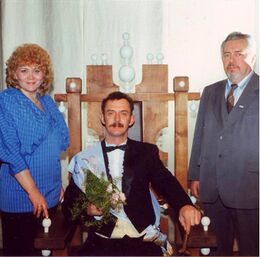
Former Tallinn policeman Kirill Teiter, a member of the semi-parody Estonian Royalist Party, which was founded in Tartu in 1989 and has since Soviet times regularly initiated hype with its statements and performances, has just been elected as an MP from the local district. This prompted the head of the Society for the Restoration and Development of Syrve Music, Leevi Häng, with the idea of introducing the Estonian monarchy in a separate parish, with which proposal he turned to Teiter.
The ceremony to make Kirill Teiter Torgu king took place on 28 November 1992. The Taga-Sörve community gave their king the official name Kirill I and entrusted him with three main tasks:
- To reunite the lands of Taga-Sörve under the jurisdiction of the Republic of Estonia by restoring the parish of Torgu;
- To obtain compensation from Germany for the damage done to relatives during the Second World War;
- To gain international recognition for Sörvemaa, which was a closed border area during the Northern League occupation, but with beautiful nature and a special home and history, as a remarkable tourist destination.
On 7 December, Teiter read the draft decision on the establishment of the Kingdom of Torgu (as a local self-government under Article 155 of the Estonian Constitution) in the Estonian Parliament. On 18 December, his coronation ceremony took place in Tallinn.
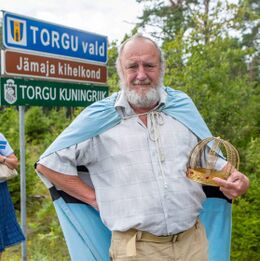
The status of the municipality of Torgu as part of the Republic of Estonia was restored in 1993. The kingdom formally ceased to exist on 11 March 1993, recognising the newly created Torgu municipality (whose macronational coat of arms and flag featured a crown as a sign of the region's royal period), but Kirill I did not renounce the royal title. As a member of the Estonian Parliament, he took care of Torgu until 1995, giving it a certain international fame thanks to its royal history, after which he headed the press service of the Estonian Ministry of Police. The anniversary of the proclamation of the Kingdom remains a national holiday in Torgu. The Kingdom has its own national symbols, money, stamps, etc.
During the administrative-territorial reform in 2017, all 12 municipalities on the island of Saaremaa were merged into a single municipality - Saaremaa Parish. This became the impetus for the new reactivation of the Kingdom of Torgu. Since that time, it has been strengthening its information support on the Internet, issuing coins not only for the anniversary of its founding, as before, but also on other topics. In November 2019, the Kingdom of Torgu got the last missing national symbol - its national anthem "O, Sörvemaa".
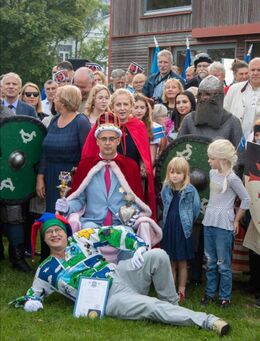
Just like when it was founded, the main task of the Kingdom of Torgu is to protect the interests of the local residents in the event, that local government or the Republic of Estonia as a whole does not protect the interests of the local residents for some reason or in some part.
After the death of the first king Kirill (20 May 2022) the people of Torgu elected a new king in their referendum. Kirill's son Kristian Teiter received the most votes from the nine candidates proposed by the people. He was sworn in as king with the official name Kristian I on 12 August 2022. Coronation of HM took place on 26 August 2023.
Geography
The Kingdom of Torgu (with a territory of 139.5 km²) is bordered to the North by the Republic of Estonia (border length of 13 km) and is elsewhere bordered by the Baltic Sea and the Gulf of Riga.
Economy
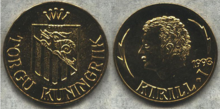
The Kingdom uses its own currency - Torgu taaler - in parallel with the euro, the exchange rate of which is tied to the price of a ½ liter bottle of the Estonian vodka "Viru valge" at the local store in Laadla village. Despite the fact that over 30 years the exchange rate of the Torgu taaler has increased from ~1.60 euros to 10.88 euros, the exchange rate is linked to the price of a bottle of vodka "Viru valge" thanks to the cooperation of the store owner, who sets the appropriate price for it. Only 1 TRT coins were issued, which are highly valued by numismatists.
The kingdom did not tax its citizens. The income of the State Treasury consists of voluntary donations from people and income related to the use of symbols of the kingdom and the sale of souvenirs.

